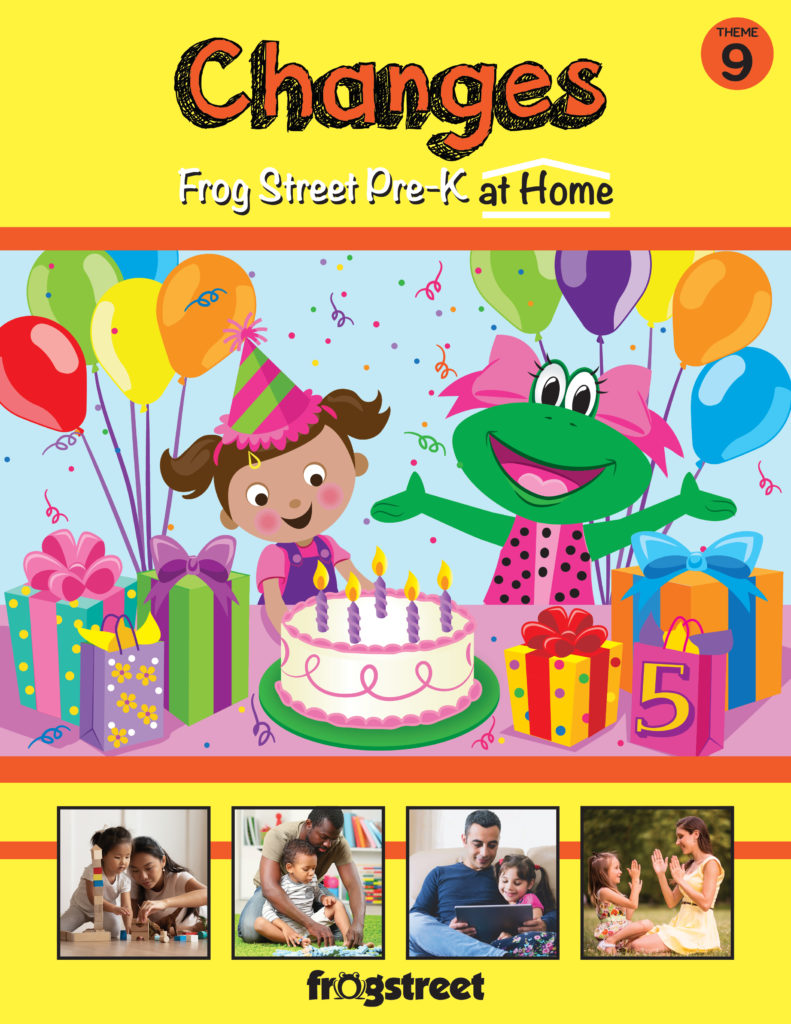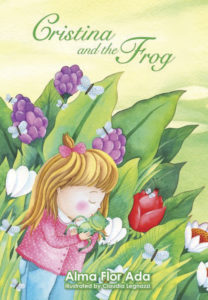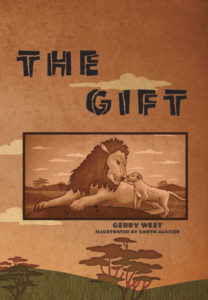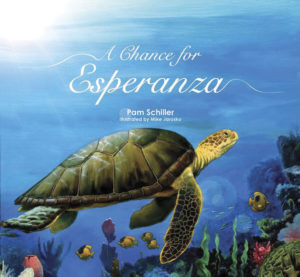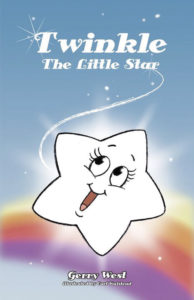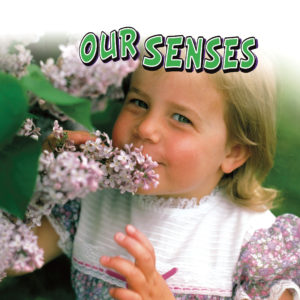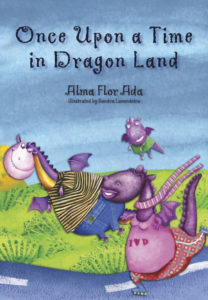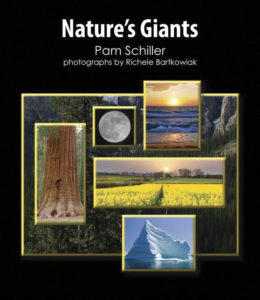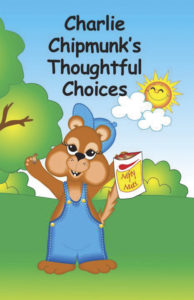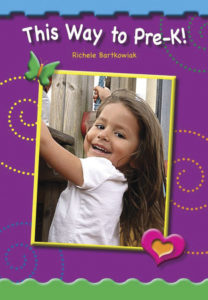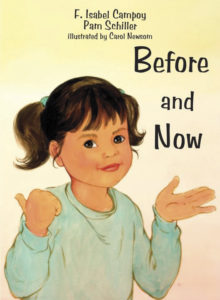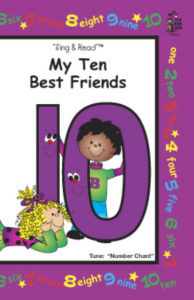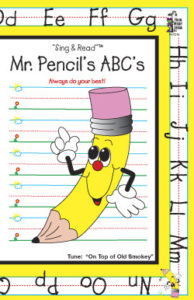Explore the effects of change this week: changes that happen over time, changes happening right now, and changes coming in the future.
Masks & Gloves
Read this social story to help your child understand why people are wearing masks and gloves. After reading the story, cut a small paper mask and place it over the face of a family member in a photo. Have your child identify the person. Say: Yes, that is ________. A mask does not change who the person is.

Is That Your Name?
Print your child’s name on a sheet of paper. Have your child name each letter as you write it. Describe the formation of the lines (straight, slanted, curved). Have your child close her eyes as you turn the paper upside down. When your child opens her eyes ask: What happened? Is that your name? Next, hold a mirror next to the paper and look at the reflection of the name in it. Have your child tell if the letters are the same or different. Ask: How would you describe the difference? (some appear backwards)
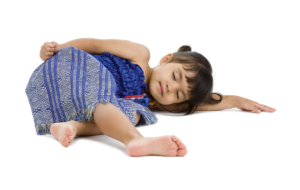
Sleeping, Sleeping
Have your child lie down on the floor and pretend to be sleeping. Say: Sleeping, sleeping, you are sleeping. When you awake, you will be a _______ (butterfly, dancer, soldier, monkey, bouncing ball, frog). Your child should “wake up” and move about like the character you name. Repeat the sleep-wake pantomime several times. Ask: What changes happen when you wake up after sleeping?
Reading with your child
Cristina and the Frog
Show the book cover. Say: As I read the story, listen for new things in Cristina’s life. Read the book and pause when your child identifies the changes Cristina experiences. (Mom doesn’t play hide-and-seek. Dad is busy making things. Grandma brings surprises. There’s a new family member.) After reading, say: Many things changed in Cristina’s life. Have similar things changed in your life?
Listen and Write
- Say: Visit begins with V. Then write the sentence.
- Have your child practice saying the letter name and sound.
- Model writing the letter.
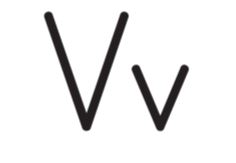
V (slant down, slant down)
v (slant down, slant down)
- Have your child practice writing the letter in the air or on the floor.
Bear Is Sleeping
Have your child pretend to be a bear hibernating in a cave. Recite or sing the verse using the tune “Are You Sleeping?” After a few moments of snoring and breathing slow, have your child wake and come out of the cave. Ask: What changes happened while the bear was sleeping?
Bear is sleeping (echo)
In his cave. (echo)
Sleeping through the chilly days,
In a nice warm cave he stays.
Snoring low. Breathing slow.
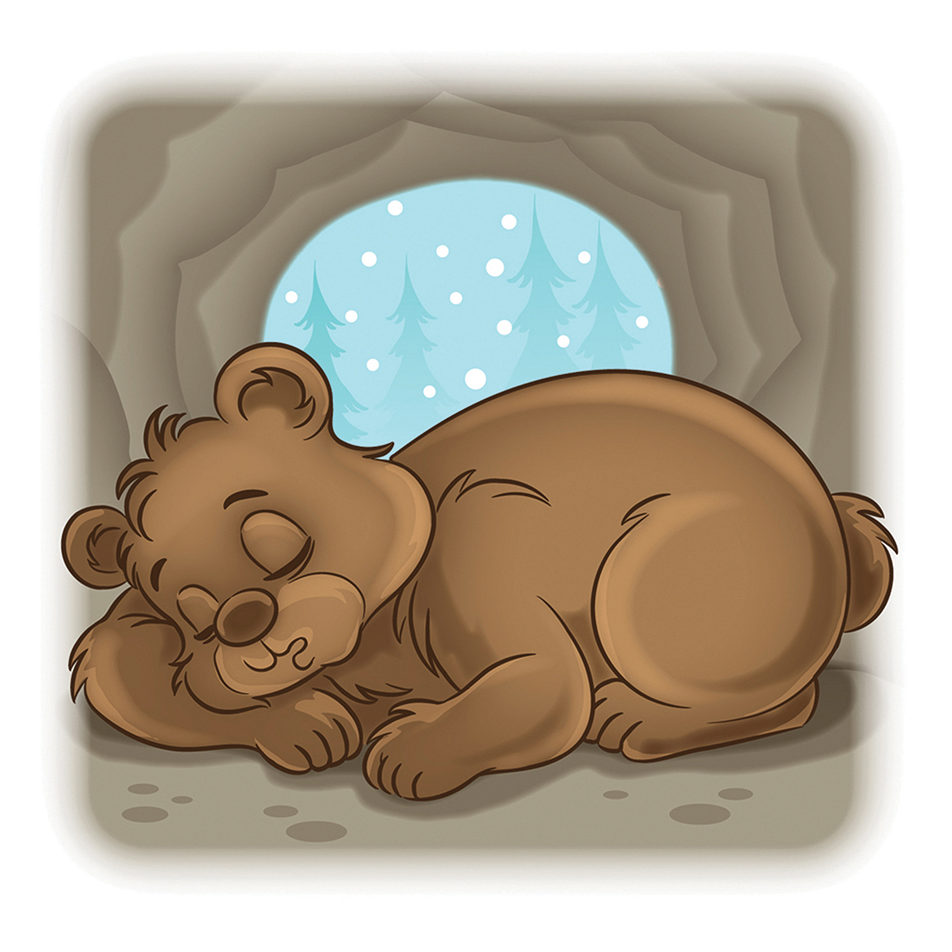
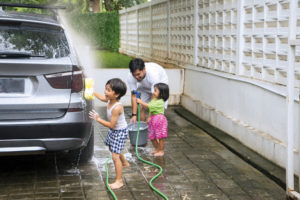
“That Was Helpful”
Listen to the song together. Although the lyrics of the song refer to a school setting, being helpful at home is also very important. Talk about ways your child can be helpful around your home. Acknowledge your child’s efforts throughout the day. Ask: How does being helpful make you feel?
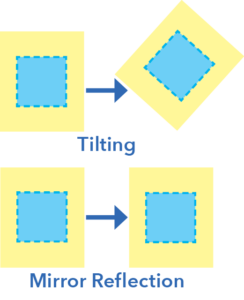
Transforming How It Looks
Talk briefly about the ways you changed the appearance of your child’s name yesterday (turning it upside down, reflecting it in a mirror). Say: Turning and reflecting are ways to transform (change) shapes. Trace the outline of a square on a sheet of paper. Turn the square, tilting it so it stands on one of its corners. Ask: How does the appearance of the square change? Reflect the square in the mirror. Ask: How does the appearance of the square change?
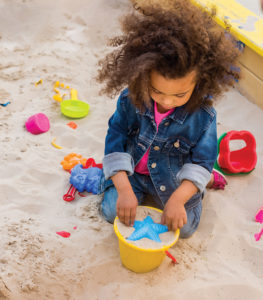
Switch It Up
Suggest that your child try something new by making different choices for outside play. If your child usually swings, suggest a tumble on the grass instead. If your child usually climbs on a play structure, suggest building something in the sandbox. Remind your child that we change by choosing new activities.
Reading with your child
The Gift
Show the title page of the book. Remind your child that the lion in this story changes as he grows. He is worried about giving up something he really loves. Say: Sometimes change means giving up something. Read the book. Have your child tell about how the lion changes. Ask: Is the lion proud of his baby cub? How do you know?
Listen and Write
- Say: Yesterday begins with Y. Then write the sentence.
- Have your child practice saying the letter name and sound.
- Model writing the letter.
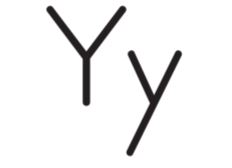
Y (slant down to middle, slant down to middle, pull down)
y (slant down, slant down)
- Have your child practice writing the letter in the air or on the floor.
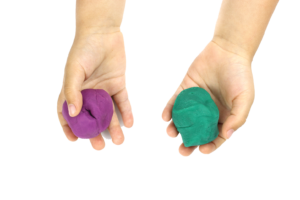
New Colors
Give your child two balls of different colored play dough. Have him knead the two balls together into one larger ball of a new color. Ask: Were you surprised by the color change? Can you separate the new ball of play dough into the two original colored balls? Explain that some changes are permanent (lasting) and some are reversible (can be undone). The play dough color change is a permanent change.
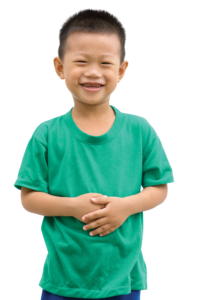
“Look at Me”
Have your child place his hands on his stomach and breathe in and out slowly to the music. Have your child listen to the music and concentrate on feeling the stomach rise when air is taken in and go down when the air goes out.
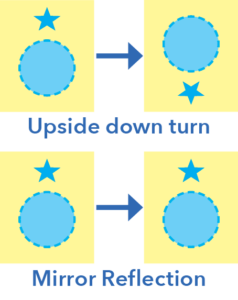
Circle Transformations
Trace around the edge of a circular object on two papers. Draw a star at the top of each sheet. (This will help you identify the top and bottom of the pages as you flip and turn them.) Put the two circles side by side. Turn one paper upside down, sideways, and reflect the image in a mirror. Talk about why the appearance of the circle doesn’t change. Ask: What does change? Help your child see that the position of the circle on the paper may change when you turn it upside down if you did not draw the circle exactly in the center.
Tiny Seeds
Talk with your child about how seeds change when you plant them. Have your child act out the change from a tiny seed to a plant as you read the verse.
Tiny seed planted just right.
Not a breath of air, not a ray of light.
Rain falls slowly to and fro,
And now the seed begins to grow.
Slowly reaching for the light,
With all its energy, all its might.
The little seed’s work is almost done,
To grow up tall and face the sun.
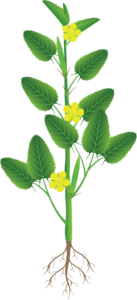
Reading with your child
Cristina and the Frog
Show this familiar book. Turn to page 24 and have your child describe the baby. Then turn to pages 30-31 and notice how Cristina’s baby sister changes over time. Ask: Was the change from baby to toddler a fast change or a slow change? Confirm that sometimes changes take a long time. Cristina waited a long time for her baby sister to grow up so she could play with her. Use the characters in the story to point out the human life cycle (baby, toddler, young girl, mother, grandmother).
Listen and Write
- Say: Baby begins with B. Then write the sentence.
- Have your child practice saying the letter name and sound.
- Model writing the letter.
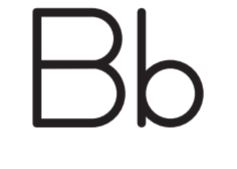
B (pull down, circle around to the middle, around to the bottom)
b (pull down, back up and around)
- Have your child practice writing the letter in the air or on the floor.
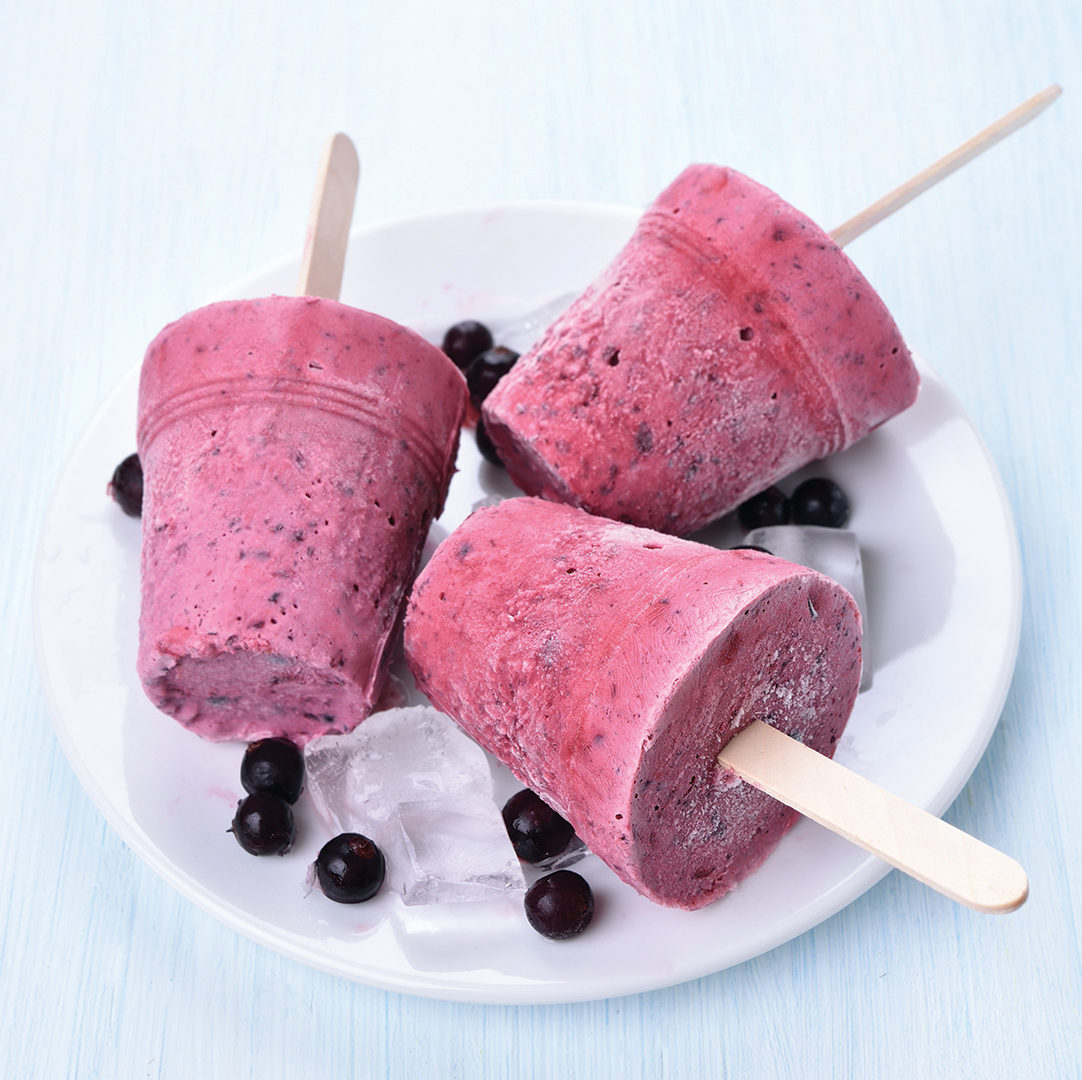
Ice Pops
Pour juice into a small paper cup (about ¾ full) for your child. Have your child take one taste of the juice. Ask your child to describe its color, taste, and temperature. Have your child place a craft stick in the cup and put the cup in the freezer. Have your child predict how the juice will change while it is in the freezer: Will the taste change? Will its color change? Will it still be a liquid? Explain that you and your child will have to wait until tomorrow to see if the predictions are correct.
Note: Ice pops can be made from any drink. Avoid sugary drinks when making a selection of what to use.
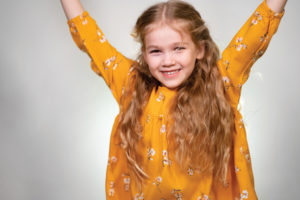
Butterfly Breathing
Remind your child that the butterfly began its life as a caterpillar. Today, begin this calming strategy by standing still and quiet. Then inhale and exhale slowly lifting and lowering brand-new butterfly wings (arms) as you emerge from your chrysalis.
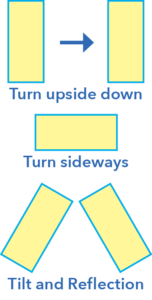
Transforming a Rectangle
Cut a sheet of paper lengthwise to make a rectangle with two very long sides and two very short sides. Have your child turn the rectangle sideways, upside down, and tilt it so it stands on one its corners. Reflect each transformation in a mirror. Talk about how the appearance of the rectangle changes or doesn’t change after each transformation.
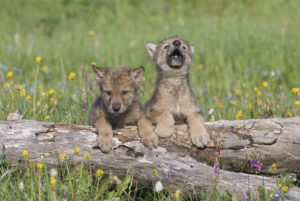
“Watch Them Change”
Listen to the song about how animal babies change. Talk about the changes described in the lyrics (egg, tadpole, frog; egg, chick, chicken; bald pup with closed eyes, wolf) Imitate the movements and the animal sounds as you sing along with the song.
Reading with your child
The Do-Nothing Machine
Remind your child that the boy in this book changes wood, nails, strings, and other things he finds into a special machine. Say: The little boy in the story, John, is an inventor. What does it mean to be an inventor? Read the story. Ask: Do you think that John was patient as he built his machine? What does it mean to be patient?
Listen and Write
- Say: Nothing begins with N. Then write the sentence.
- Have your child practice saying the letter name and sound.
- Model writing the letter.
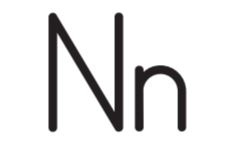
N (pull down, slant down, pull down)
n (pull down, curve over and down)
- Have your child practice writing the letter in the air or on the floor.
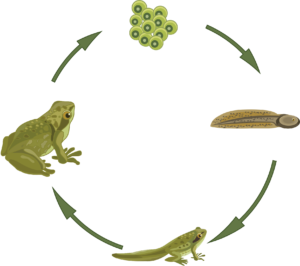
Frog Life Cycle
Remind your child that the change caterpillars go through as they become butterflies is called a life cycle. Frogs go through changes too. Draw a life cycle circle. Frogs also begin as eggs, but their eggs are in the water. Draw several eggs at the top of the circle. Say: When the frog egg hatches, a tiny tadpole swims out. It does not have any legs. Draw a minnow-shaped tadpole on the right side of the circle. The tadpole swims in the water and it grows legs. Draw the tadpole with legs at the bottom of the circle. Soon the tadpole becomes a frog. It can hop and it can swim. Draw a frog on the left side of the circle. The frog lays eggs in the pond and the life cycle continues.
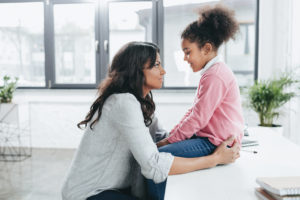
Changing Emotions
Explain to your child that the two of you can control or change emotions. You have learned calming strategies to help calm down when you are feeling upset. So you can change upset to calm. Tell your child about a strategy you use to change the way you feel. Ask your child to name a favorite calming strategy. Do both strategies to begin your day. Ask: How is changing an emotion like changing the color of the play dough balls?
Transforming Triangles
Fold a square of paper in half diagonally. Cut along the fold line to create two right triangles. Have your child move one of the triangles (turning it upside down, turning it sideways, and reflecting it in a mirror). After each transformation, have your child describe and compare the triangle’s appearance to the other triangle which remains in the original position.

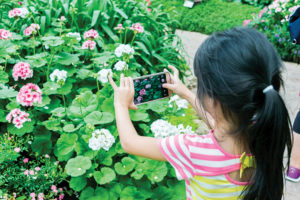
What’s New?
Take a walk around your yard, park, or playground looking for something that is new. You may spot a flower that is about to bloom or a bird that is building a nest. Talk about how the plant, insect or animal may change as the days and weeks go by. Take a photo of the thing you found. Check back in a few days to see if you notice any changes. Take photos to show the changes you find.
Reading with your child
A Chance for Esperanza
Remind your child that this book is a true story about an experience the author had with baby turtles. Read the book paying attention to the changes that occur when mother turtles lay eggs, the turtle eggs hatch, and baby turtles make their way to the ocean. Ask questions to help your child think about the turtle’s life cycle:
- Why does the mother turtle bury the eggs deep in the sand?
- Why do the people dig them up, count them and rebury the eggs?
- What happens when the baby turtles begin to hatch?
- Why is it important for the baby turtles to crawl to the sea?
Listen and Write
- Say: Count begins with C. Then write the sentence.
- Have your child practice saying the letter name and sound.
- Model writing the letter.
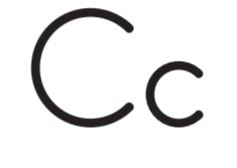
C (circle around and up)
c (circle around and up)
- Have your child practice writing the letter in the air or on the floor.
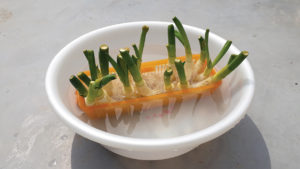
Re-growing Vegetables
Help your child regrow green onions, celery, or carrots. Supervise carefully as your child cuts off the stems and leaves so that the root or stalk of the vegetable remains. Place the roots or stalks in a small basket and place the basket in a bowl of water. The water should cover the roots. Set the bowl near a sunny window. Change the water daily and watch what happens.
This week your child will study day and night, seasons, and weather. It’s a great opportunity to explore with your senses.
Hold Your Hands
Hold your child’s hands and sing this variation of “Row, Row, Row Your Boat.” It’s a great way to connect as you begin and end your day. Face your child, hold hands gently swinging them, and then blow a kiss.
Hold, hold, hold your hands
Gently just like this.
Merrily, merrily, merrily, merrily,
And then we blow a kiss! (Muah!)
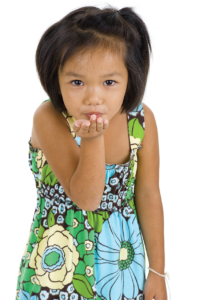
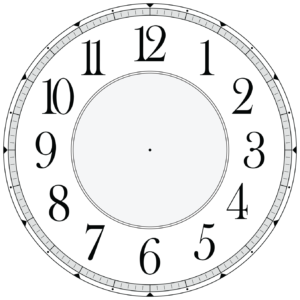
Numerals on the Clock
Show your child an analog clock. Explain that the numerals on the clock’s face help people know what time it is. Start with the numeral 1 and count around the clock face to 12. Create a clock face on a paper plate. Fold the plate in half. Write 12 on the fold line at the top and 6 on the fold line on the bottom. Write 3 halfway between 12 and 6. Write 9 halfway between 6 and 12. Help your child fill in the missing numerals on the clock face. Count around the face to make sure that the numerals are written in the correct order.
Sally Go Round the Moon
Join hands and circle in one direction while chanting the verse. Teach your child to jump just before saying: boom, boom and then to change direction as you chant the verse again.
Sally go round the sun,
Sally go round the moon,
Sally go round the chimney pots
On Sunday afternoon–boom, boom.
Change the name of the day each time you sing the song.
Reading with your child
Twinkle the Little Star
Read the familiar story. Say: This story tells about a little star’s nighttime activities. Talk with your child about day and night activities.
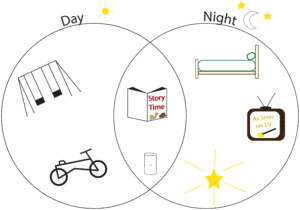
Draw two circles overlapping slightly in the center. Label one circle “Day” and other circle “Night.” As your child names activities, draw or write to add them to the correct circles. If your child names an activity that she does in daytime and nighttime, draw that activity in the overlapping section of the circles.
Listen and Write
This week you will continue to model the correct formation of alphabet letters. You will also have your child fill in blanks to complete a sentence and write it so your child can see his or her words in print.
- Say: On begins with O. Write the sentence.
- Have your child practice saying the letter name and sound.
- Model writing the letter. Have your child practice writing the letter in the air or on the floor.
- Say: In the nighttime I _____. Have your child complete the sentence. Write it.
- Read the sentence pointing to each word as you say it.
Seven Days
Practice naming the seven days of the week as you sing this echo song with your child. Sing the lines to the tune of “Are You Sleeping?”
There are seven days (echo)
In a week. (echo)
Sunday, Monday, Tuesday
Wednesday, Thursday, Friday
Saturday (echo)
Draw Your Routine
The brain works best when a person feels safe. In order to feel safe, the brain looks for predictable and consistent routines and patterns. You have been following routines each day as you work with your child. Help your child visualize your morning routine by drawing and writing the steps the two of you go through as you begin your day. For example: wake up, get dressed, eat breakfast, start school.
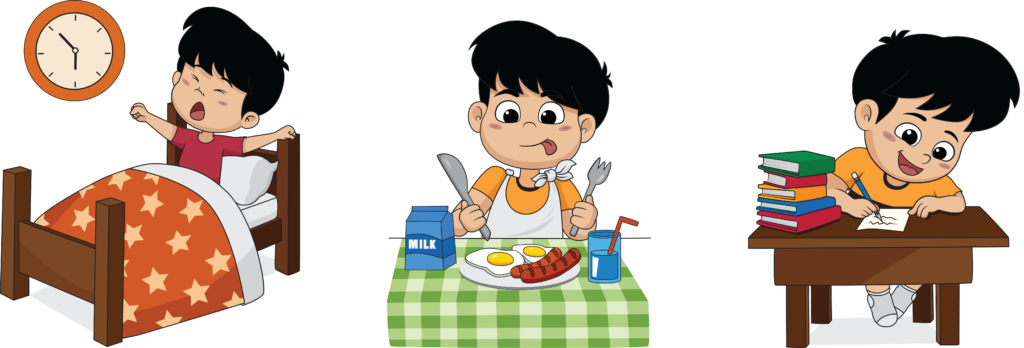
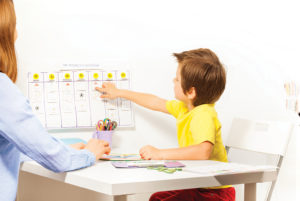
Numerals on the Calendar
Show your child the current month on a calendar. Talk about how the numerals are arranged. For example, point out how smaller numbers are at the top of the calendar and larger numbers are at the bottom. Start with the numeral 1 and count with your child as he points to each numeral. Point out that you move from left to right along a row, move down one row, and count across left to right again. Say: We count left to right and top to bottom. Ask: How is the calendar like a number line? How is it different?
Shadow Tag
Play a game of tag with your child. Instead of touching your child, step on her shadow. Ask: How can you move your shadow so I can’t tag it? Invite other family members to join the active play. When you are ready for a break, find a shady place to rest where there are no shadows.
Reading with your child
Clouds
Explain that today you will read a poem. Read the poem slowly. Ask: What do you think the poet is talking about? Did the poet’s words make you think of something you have seen in the sky? Your child may guess that the author is describing clouds. If not, tell your child the title of the poem, “Clouds.” Ask: When you look at the clouds, what do you imagine?
White sheep, white sheep,
On a blue hill,
When the wind stops,
You all stand still.
When the wind blows,
You walk away slow.
White sheep, white sheep,
Where do you go?
Listen and Write
- Say: Read begins with R. Write the sentence.
- Have your child practice saying the letter name and sound.
- Model writing the letter. Have your child practice writing the letter in the air or on the floor.
- Say: In the daytime I _____. Have your child complete the sentence. Write it.
- Read the sentence pointing to each word as you say it.
The Earth Turns
Remind your child that the earth is always turning. It moves in a circle (orbit) around the sun and it turns around (rotates) as it moves. Each time it turns around, the sun is hidden from our view. We call that time night. Draw an X on one side of a ball. Tell your child that the X marks the spot on earth where you live. Have your child shine a flashlight on the ball while you slowly turn it. When the X is turned away from the light (sun), it is nighttime. As the earth turns around, the X comes back into the light. It is daytime.
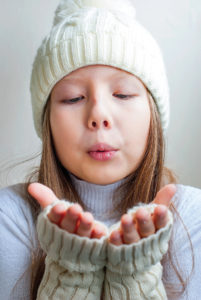
Snowflake Blowing
Teach your child this winter variation to your breathing techniques.
- Put on a stocking hat or winter coat.
- Cup hands in front and inhale deeply.
- Slowly exhale as you blow gently pretending to keep snowflakes dancing in the air.
- Repeat several times.
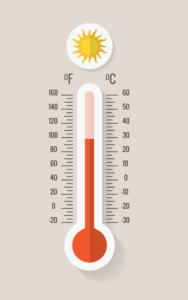
High and Low Temperatures
Watch a weather forecast with your child. Note the current temperature. Say: Temperatures tell us if it is hot or cold outside. Show your child a thermometer. If you do not have a thermometer, use a photo of one on the Internet. Point out and discuss the arrangement of the numerals on the thermometer. Point to the zero and move your finger up to show the temperature rising. Then point to the zero and move your finger down to show the temperature falling. Ask: Would you rather have hot (high) temperatures or cold (low) temperatures? Why?
The Umbrella Brigade
Explain that a brigade is a group of marchers. Pretend to hold an umbrella and march to the rhythm of this poem by Laura E. Richards. Ask: When do you use an umbrella? What time of year does it rain the most?
But let it rain,
Tree toads and frogs,
Muskets and pitchforks,
Kittens and dogs!
Dash away! Plash away!
Who is afraid?
Here we go,
The Umbrella Brigade!
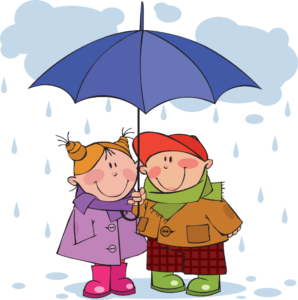
Reading with your child
Our Senses
Read this nonfiction book. Ask: What do our senses tell us about the seasons? Help your child reflect on this question by first naming a season and then naming each sense.
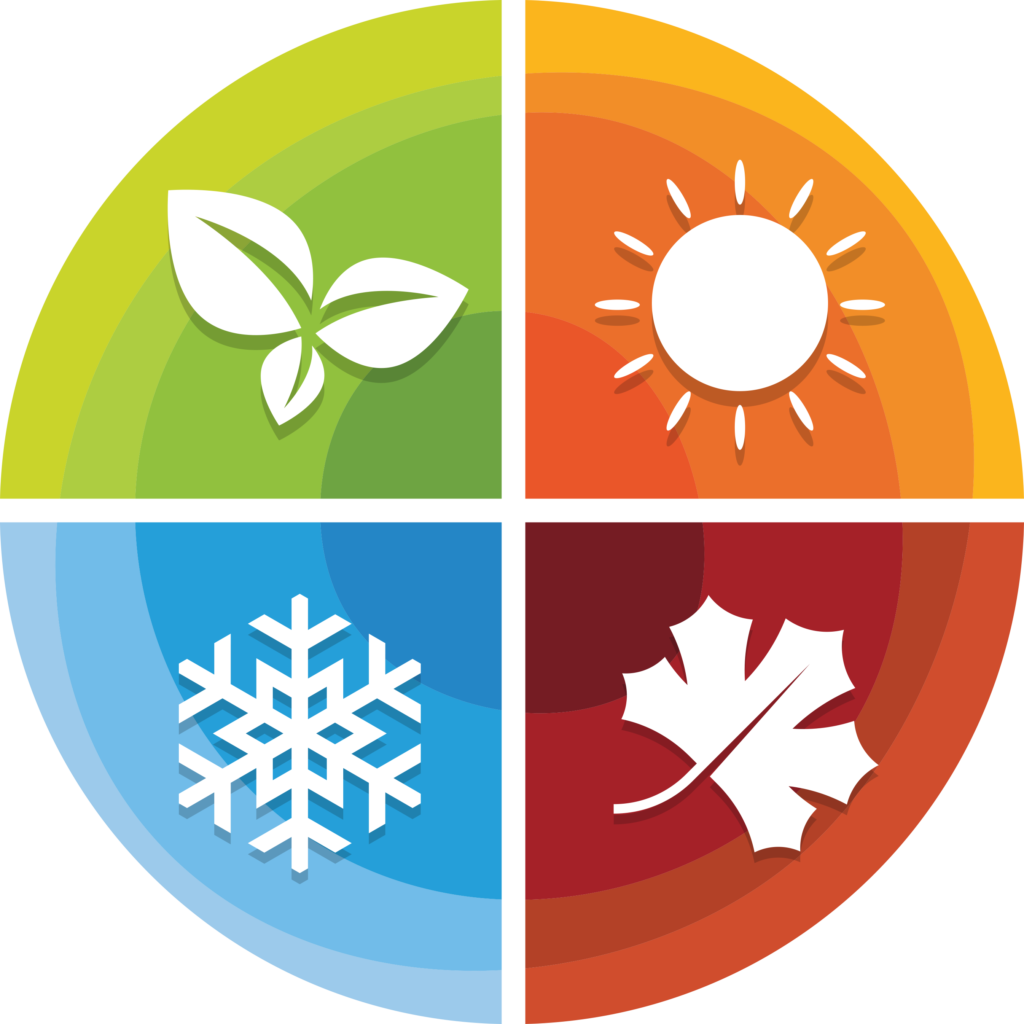
For example: Let’s think about winter. What do your eyes see in the winter? What do you hear? What do you feel? What do you smell? What do you taste? Repeat with the other three seasons. This type of discussion helps your child begin to notice differences in the four seasons.
Listen and Write
- Say: Quiet begins with Q. Write the sentence.
- Have your child practice saying the letter name and sound.
- Model writing the letter. Have your child practice writing the letter in the air or on the floor.
- Say: In the winter I _____. Have your child complete the sentence. Write it.
- Read the sentence pointing to each word as you say it.
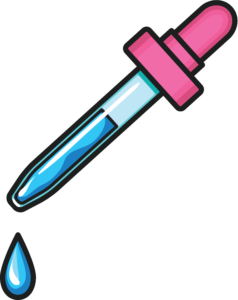
Raindrop Race
Show your child how to squeeze an eyedropper to create drops of water. Practice over the sink. Then spread a towel on the ground next to a set of steps or the kitchen cupboards. Slant a cookie sheet against the steps. Explain that the two of you will have a raindrop race. Count to three and at the same time drop a raindrop at the top of the cookie sheet. Watch the drops race to the towel. Ask: Which drop was fastest? Does the size of the drop change how fast it moves?
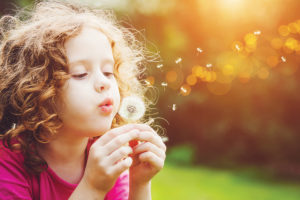
Dandelion Blowing
Pretend you are holding a flower in front of your mouth. Inhale deeply, then gently exhale as you pretend to blow the dandelion seeds all around the yard: to your left, center, and to your right. Say: Yesterday, you pretended to blow a snowflake, today you pretended to blow a dandelion. How are the two different? In which season would you find a flower or a snowflake?
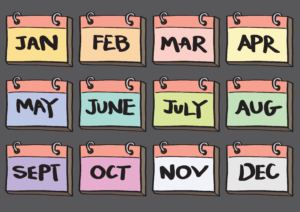
Twelve Months in a Year
Remind your child of the calendar page you used earlier in the week. Say: The page that we looked at was for the month of _____. Our year is divided into twelve months. Using a yearlong calendar (or writing the names of the months) point to each month as you say its name. Point out the current month and any other months that have special meaning for your child (birthday, visit from Grandma, special holiday). Repeat the names of the months with your child echoing each name.
Falling Leaves
Talk briefly about how in the fall the leaves on many trees change colors and fall to the ground. Have your child become an autumn leaf. Chant or sing this verse and watch your child whirl and turn to the ground.
Autumn leaves are falling down,
Falling down, falling down.
Red and yellow, orange and brown.
I love autumn.
Whirling, twirling round and round,
Round and round, round and round.
Falling softly to the ground.
I love autumn.
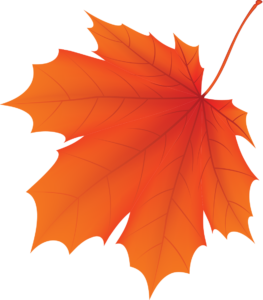
Reading with your child
A Thunderstorm
Remind your child that we use a giant word to describe sound words (onomatopoeia).
Boom, bang, boom, bang,
Rumpety, lumpety, bump!
Zoom, zam, zoom, zam,
Clippity, clappity, clump!
Rustles and bustles,
And swishes and zings!
What wonderful sounds
A thunderstorm brings.
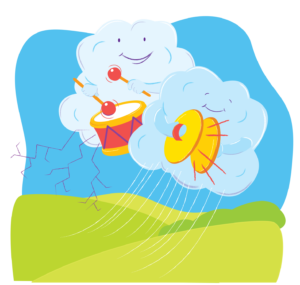
Have your child listen for words that describe sounds as you read “A Thunderstorm.” Then brainstorm additional weather sound words (pitter patter, crackle, rumble).
Listen and Write
- Say: Extra has an x. Write the sentence.
- Have your child practice saying the letter name and sound.
- Model writing the letter. Have your child practice writing the letter in the air or on the floor.
- Say: In the spring I _____. Have your child complete the sentence and write it.
- Read the sentence pointing to each word as you say it.
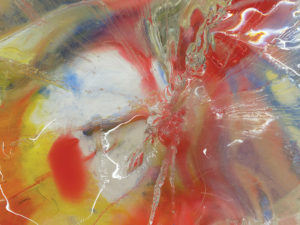
Melting Ice
Freeze water in a clean, empty gallon milk jug or an ice-cream container. When frozen, remove the ice and place it on a tray covered with several layers of newspaper. Have your child sprinkle the top of the ice block with coarse salt. After a few minutes, the salt will begin to melt tunnels through the ice. Give your child an eyedropper and food coloring. Have her drip the food coloring on top of the ice block. The food coloring will run through the ice. Try adding several colors. Ask: How does the color change as the ice melts?
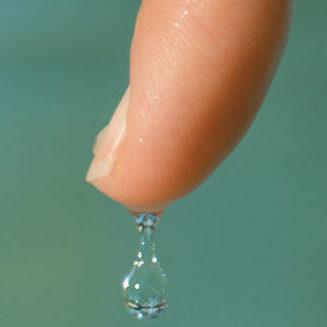
Raindrops
Try this variation of the calming strategy Drain. Have your child pretend to be an angry cloud before a storm. As your child releases the stress, pretend raindrops are dripping from her fingertips.
Four Seasons in a Year
Refer to the calendar or list of months that you showed your child yesterday. Say: The months in every year are divided into four seasons: winter, spring, summer, and fall. Circle or underline December, January, and February with blue. Say: These are winter months. Repeat with green for spring months (March, April, May); yellow for summer months (June, July, August); and orange for fall months (September, October, November). Repeat the four seasons and have your child echo the names. Talk briefly about each season. Say: The earth changes during each season. Which season is your favorite? Why?


“Side by Side”
This song was a popular tune many years ago. Enjoy listening to the lyrics and then energetically walking arm-in-arm as you sing along. Ask: Do you agree that the weather doesn’t matter as long as we’re together? Why or why not?
Reading with your child
Once Upon a Time in Dragon Land
Explain that this familiar story offers an explanation for thunder and lightning. Read the story. Ask: Where does the story say thunder and lightning come from? Do you think this is true? If your child is interested in knowing what does cause lightning and thunder, explain that lightning is caused by electricity that is generated when water and ice particles move around inside a cloud. Thunder is caused by the expansion of air surrounding lightning (the electricity). Thunder is the sound. Lightning is the flash.
Listen and Write
- Say: Umbrella begins with U. Write the sentence.
- Have your child practice saying the letter name and sound.
- Model writing the letter. Have your child practice writing the letter in the air or on the floor.
- Say: On a rainy day I _____. Have your child complete the sentence. Write it.
- Read the sentence pointing to each word as you say it.
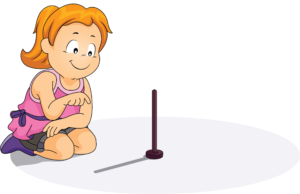
Create a Sundial
Find a spot outside that is in the sun. Put a mop handle or a yardstick in a bucket of dirt or sand so that it stands upright. Notice the shadow on the ground caused by the stick. Place a rock at the end of the shadow or draw a chalk mark to indicate where the shadow is. Check on the stick throughout the day. You will need to move the rock or draw a new chalk mark as the shadow changes position. At the end of the day, explain that the shadow changed positions because the earth is moving.
This week you and your child will talk about and explore the important role you play in caring for and nurturing the earth.
Can of Worms
Laughing is one way to release stress. As you do the Can of Worms greeting today, pay attention to how the laughter that happens as you squiggle your fingers on your child’s hand helps both of you relax.
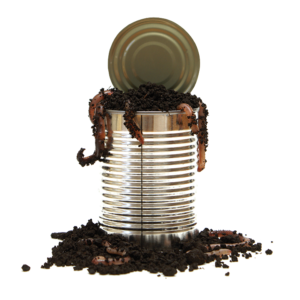
- Sit facing one another, holding hands out with right palms up.
- Put the fist (representing a can of worms) of the left hand on top of your child’s palm.
- Count to three and let the “worms” spill out (tip your fist and wiggle your fingers).
- Giggle together.
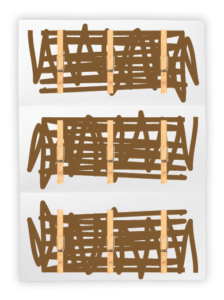
Three Rows of Trees
Divide a sheet of paper into three equal-sized rows. Have your child color each row brown like the color of soil. Have your child count out nine clothespins to use as pretend pine trees. Challenge your child to problem solve a way to plant the same number of trees in each row. Help as needed, suggesting adding one tree at a time to each row. After your child places all nine clothespins, count to confirm that there are three in each row.
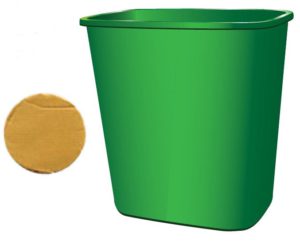
Toss and Catch
Cut circles from cardboard or poster board. Have your child toss the circle into the air as you try to catch it in a wide-mouth plastic container. Switch roles so that your child also has a turn catching the circles. Begin catching with a small plastic trash can and gradually move to smaller “catchers” as your catching skills improve.
Reading with your child
Nature’s Giants
Take a picture walk through this familiar book. Stop on each page to discuss the beauty of the giants pictured. Have your child identify colors and details in the photos. Say: The earth is a beautiful place. We are fortunate to have such a beautiful home. Read the book. Extend the lesson by going outside and looking for a beautiful thing in nature.
“I Love the Mountains”
Listen to the song. Talk about the things that the singer loves: mountains, hills, flowers, daffodils, rivers, stream, sunshine, moonbeams. Sing along with the chorus as you listen a second time. Ask: What would you add to the song?
Listen and Write
Each day this week, your child will complete a sentence telling something in nature he or she enjoys. Today, print Things I Enjoy in Nature at the top of a sheet of paper. Each day add your child’s completed sentence to this page.
I enjoy ____________.
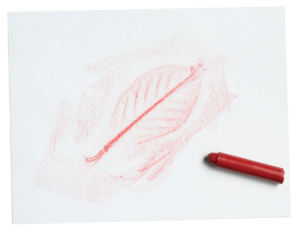
Leaf Rubbings
Walk around your neighborhood with your child to gather a variety of leaves. Show your child how to make a leaf rubbing by placing a leaf under a piece of paper and using the long side of an unwrapped crayon to rub over the paper. Ask: What parts of the leaf do you see in your rubbing? How did it feel to rub the crayon over the leaf? Repeat with leaves placed in different positions under the paper. It is fine if rubbings overlap.
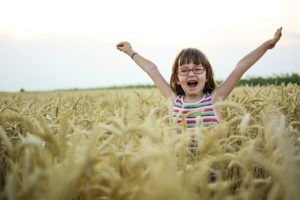
Sunbeam Calming Strategy
Have your child try the Sunbeam calming strategy.
- Spread arms out wide like sunbeams.
- Slowly inhale and exhale.
- Imagine stress glowing on the fingertips and then moving away like rays of light.
Ways to Rearrange Eight
Have your child help you tear off eight squares of toilet tissue or eight stick-on notes. Have your child place the squares side by side in one row to make a long rectangle shape. Challenge your child to rearrange the eight squares in different ways to build a rectangle that is not as long, but is taller. Count the number of squares in each row (two rows of four).
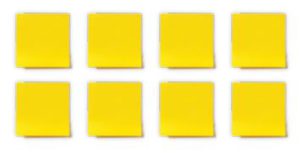
Have your child create a tall, narrow rectangle (four rows of two). Say: We are using the squares in a new way so we are recycling them. Let’s save them after this project to use again in another way.

Nature Pattern
Go outdoors for a walk. Have your child carry a basket and collect nature items, such as rocks, twigs, leaves, seed pods, and pine cones. Remind your child not to destroy living plants but to find beautiful objects that have fallen from plants and are waiting to be found and used. Help your child place the items in a pattern such as seed pod, pine cone, seed pod, pine cone. Create more complicated patterns as an additional challenge.

Reading with your child
Welcome to Zippity Zoo
Show the book cover. Explain that people work to protect animals in many ways. One way is to create natural habitats for animals in quality zoos. Zoologists are scientists who study animals and teach others how to care for them. Read the book. Ask: How would we learn about animals if there were no zoos? If you ran a zoo, which animals would you include?
A Chance for Esperanza
Explain that this book tells about people who protect turtles from many predators (enemies). Read the book. Have your child explain why Iván and the little boy’s mother bury the eggs in the sand. Ask: What are some of the other ways that the environmentalists (people who work to protect the environment) helped the baby turtles?
Listen and Write
Have your child tell something he or she enjoys in nature. Add the sentence to the page labeled Things I Enjoy in Nature.
I enjoy ____________.
Homemade Bubble Solution
Help your child mix ¾ cup water, 2 tablespoons dishwashing liquid, and 2 teaspoons corn syrup to create your own bubble solution. Search for objects around the house that could be used as bubble wands: chenille stems, 6-pack rings, berry baskets, potato mashers. Use the objects to blow bubbles. Ask: Which object will you try? Why? Recycling objects is a way to nurture the earth.
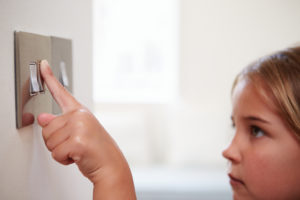
“Friendship Chant”
Talk with your child about ways that you can be a friend to Earth. Listen to the song and make a specific commitment. For example, you might say: Today we will turn off the lights when we leave a room. or We will throw snack wrappers in a trash can instead of leaving them on the playground.
Making Two Equal Groups
Find two similar empty boxes and seven empty soda cans or water bottles. Ask: Is it possible to make two groups of cans with the same number using seven cans? Encourage your child to problem solve this question. If your child is unable to think of a strategy, suggest placing one can at a time in each box. Confirm that it is not possible to organize seven cans into two equal groups. Say: We say seven is an odd number, because you cannot split it into two equal groups. Experiment with other numbers 1-6. Decide which numbers are even (can be split into two equal groups) and which numbers are odd.
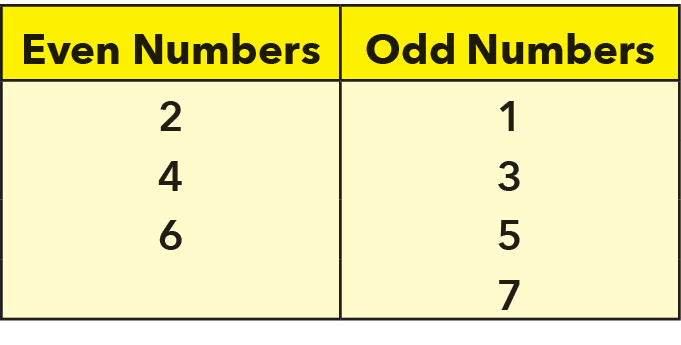

“We’ve Got the Whole World in Our Hands”
Remind your child that it is everyone’s job to take care of the earth. Listen to this song and think about what the suggestions for reduce, reuse, and recycle mean. Then clap and sing along with the lively tune.
Reading with your child
Cristina and the Frog
Talk with your child about some of the items that babies need (clothes, diapers, crib, high chair, stroller). Read the story. Pause on pages 8-11 to see what Cristina’s mom and dad are making for the new baby. Explain that many families reuse baby cribs, high chairs, and clothes from older siblings. Some families go to yard sales and resale shops to purchase gently worn items for new babies. Show pages 30-31. Ask: What toys do you think Cristina shared with her sister?
Hurt No Living Thing
Read this poem by Christina Rossetti to your child and talk about what it means to the two of you.
Hurt no living thing,
Ladybug or butterfly
Nor moth with dusty wing
Nor cricket chirping cheerily
Nor grasshopper, so light of leap,
Nor dancing gnat,
Nor beetle fat,
Nor harmless worms that creep.
Listen and Write
Have your child tell something he or she enjoys in nature. Add the sentence to the page labeled Things I Enjoy in Nature.
I enjoy ____________.
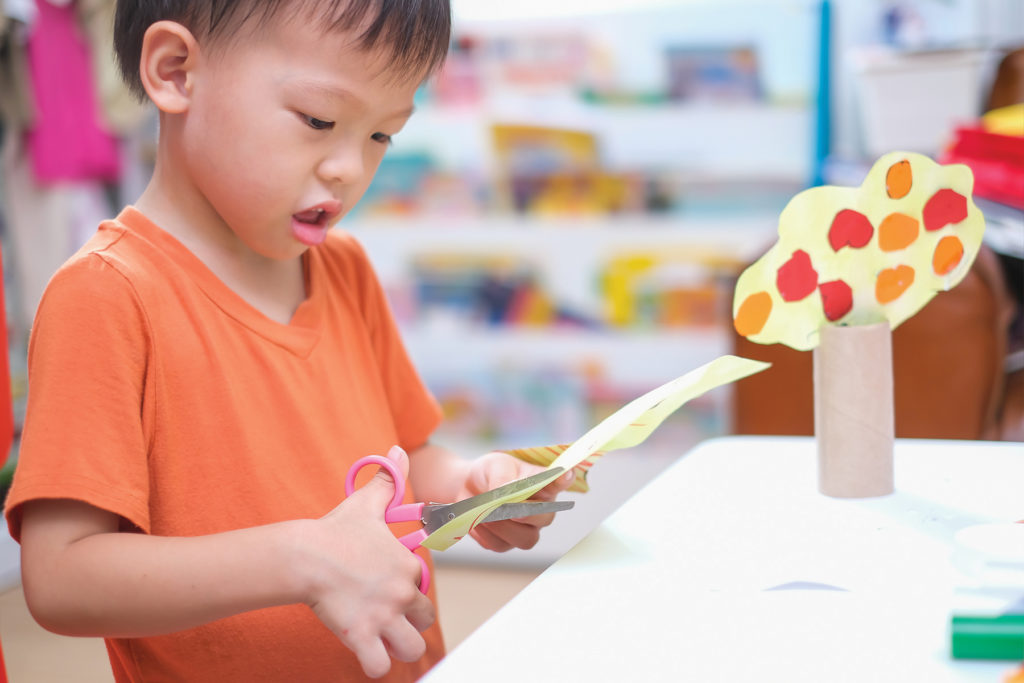
Recycle and Reuse
Say: We can recycle and reuse. Recycle means using something again in a new way. Reuse means using something over and over again until it cannot be used any more. Think of some creative ways to use objects, like empty paper-towel tubes, margarine tubs, and bottle caps, that might end up in your trash. Then try out your ideas!
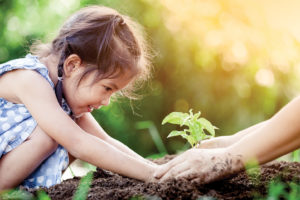
“That Was Helpful”
Listen to the song and remember ways that you have helped family members and friends. Say: Today we will look for ways to help the earth. Throughout the day, notice and acknowledge any actions that help protect the environment. You _______. That was helpful to the earth.
The Ten Frame
Have your child count the fingers on your hands. Confirm that people usually have ten fingers altogether. Have your child match each finger on one hand to a finger on the opposite hand. Emphasize that each hand has five fingers. Draw a 5-square by 2-square grid (ten frame) on a sheet of paper or cut two cups off an egg carton so that it has ten cups (two rows of five cups). Say: Each row of the ten frame has five just like your hand. Note: You will use the ten frame for counting and comparing numbers tomorrow.

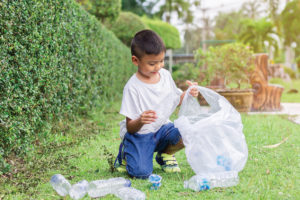
Sorting Recycled Trash
Gather your recycling bins outside in an open area. Have your child sort the items into boxes or bags labeled: plastic, metal, paper. Ask: How would sorting recycled items by materials be helpful?
Reading with your child
Charlie Chipmunk’s Thoughtful Choices
Point out that part of taking care of the earth’s resources means making thoughtful choices. The earth provides water and air and good soil. These gifts from the earth are resources. Read the book as a reminder of the different types of choices we make. Ask: What kind of choice do we make when we turn off the lights as we leave a room or turn off water while we brush our teeth?
Nature’s Giants
Conserve means to protect from harm and to use wisely. Ask: What are some of the earth’s resources that we need to conserve? (clean water, clean air) Picture walk through the book to recall other earth resources like energy (page 19). Explain that the purpose of conservation is to take care of the environment and our planet.
Listen and Write
Have your child tell something he or she enjoys in nature. Add your child’s completed sentence to the page labeled Things I Enjoy in Nature.
I enjoy ____________.
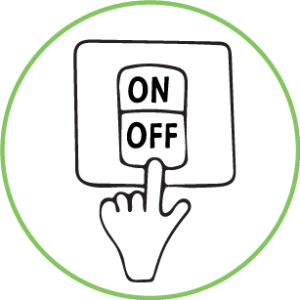
Light-Switch Reminders
Create reminders to turn off lights when you leave a room. Give your child 4-inch circles cut from recycled paper. Your child can use the blank back of the paper to draw a picture or write a reminder (lights out, turn off, good-bye). Help your child with the writing as needed. Attach the reminder to a light switch or lamp with tape or white sticky tack. Ask: Why is it important to turn lights off when you leave the room?
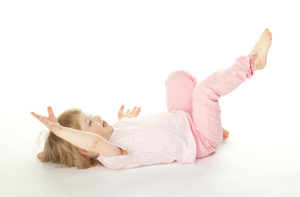
Bicycle Pedaling
Riding a bike does not use the earth’s resources for fuel. Review Bicycle Pedaling with your child:
- Lie on your back.
- Move your legs slowly as if pedaling a bicycle.
- Breathe in to a count of three left-right pedals.
- Breathe out to a count of five left-right pedals.
- Do five repetitions of counting while breathing in and out.
Which Numbers Are More Than Ten?
Help your child use the ten frame created yesterday to show quantities 1-19. For example, have your child count out a set of 8 rocks, placing each rock in the ten frame. Place the first rock in the left top section. Place additional rocks moving left to right filling the top row and then moving left to right filling the bottom row. Ask: Is 8 fewer (or less) than 10? How many more do you need to make 10? Represent numbers greater than 10 by filling the ten frame and then leaving the extra rocks to the side.

Toss It
Show your child how to wad up recycled papers to make paper balls. Place a cardboard box (recycled, of course!) about two feet away from your child. Have your child toss the paper balls into the box (pretending to toss trash into a trash can). Change the game by throwing small recycled bottles, small cans, or bottle caps. Ask: How do you change your toss for objects of different sizes and weights? How is this game like throwing trash into a trash can?
Reading with your child
The Do-Nothing Machine
Show pages 6-7. Ask your child to name some of the materials in the illustration that can be reused or recycled. Read the book. Explain that John changed his original idea. He expanded his invention. Show your child pages 14-15 and then pages 22-23. Ask: What did John add to make a more complex machine?
Listen and Write
Have your child tell something he or she enjoys in nature. Add the sentence to the page labeled Things I Enjoy in Nature.
I enjoy ____________.
Will It Dissolve?
Enjoy a science exploration. Show your child the following items: rock, salt, leaf, sugar, and pepper. Ask your child to predict whether each item will dissolve (disappear) when stirred in water. Test each item to check your child’s predictions. You will need five clear cups and a spoon for stirring. (The rock, leaf, and pepper do not dissolve.)
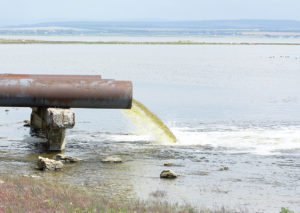
Explain that sometimes people put substances in lakes, streams, and oceans that dissolve like the salt and the sugar. Say: When harmful materials dissolve in the water, we say that they pollute the water (make the water dirty). Since both humans and animals get their drinking water from lakes, rivers, and streams, we want the water to be clean.
Spend this week remembering the past year and acknowledging the growth your child has made. Begin now to prepare for the changes that will come next year.
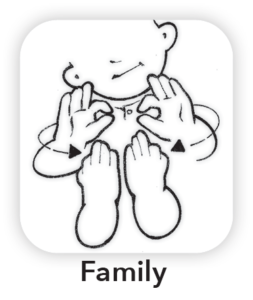
“My School Family”
Talk with your child about the changes that you have noticed over the past year. Even though your child has been learning at home with you, he or she has grown both physically and intellectually. Say: This year your school family has been our family here at home. How do you think that will change next year? Remind your child how to sign “family” and sing the song together.
How Does the Snake Grow?
Have your child make rows of pennies. Start with one penny in the first row, two pennies in the second row, and three pennies in the third row. Explain that the rows of pennies represent how much a pretend snake grows. When it is one year old, it has only one circle. When it is two years old, it has two circles. Challenge your child to extend the pattern. Ask: How many pennies long is a four-year-old snake, a five-year-old snake?
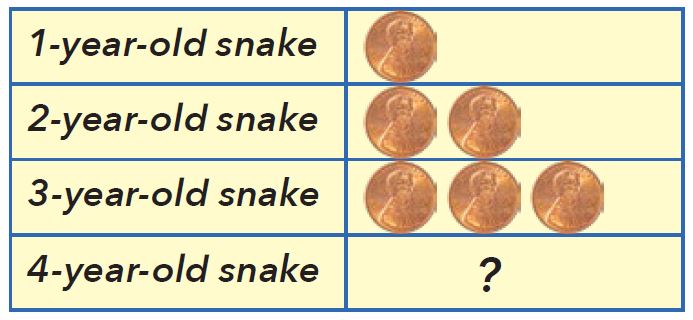
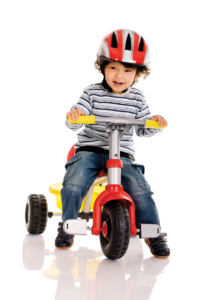
Now I Can
Have your child think of and demonstrate skills he or she has learned playing outside. Help your child frame the skill in a “before and now” sentence. For example, Before I could not ride a tricycle. Now I can ride all the way around the yard. Some other examples might include pumping legs when swinging, throwing a ball, or hopping on one foot.
Reading with your child
This Way to Pre-K
Remind your child that you have read this book several times throughout the year, including the very first week of school. Explain that the classroom in the book is similar to the classroom where your child might have gone. Read the story. Ask: How was our pre-k day different than the pre-k day in the book? What has been your favorite part of our pre-k at home?
Listen and Write
You will use the paper you prepare today to record one of your child’s sentences each day this week. Write Changes at the top of the paper. Explain to your child that you will write part of a sentence on the paper. Your child will tell you how to fill in the blanks to complete the sentence. Each day, the two of you will write a new sentence using the sentence frame.
Before I _______, but now I _________.
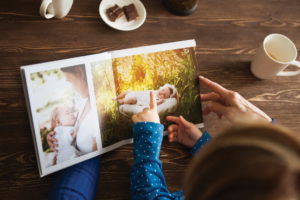
When I Was One
Recite this poem for your child. Ask: What do you remember about when you were one? This is a great opportunity to look through old photos or scrapbooks. It will be fun for both of you to talk about the past. (Repeat the question for other ages.)
When I was one, I was so small,
I could not speak a word at all.
When I was two, I learned to talk.
I learned to sing. I learned to walk.
When I was three, I learned about me
And when I turned four, I learned some more.
Now I’m five and I’ve arrived.
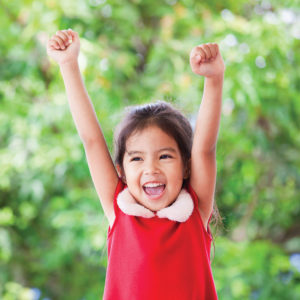
Celebrate Achievements
Catch your child being successful and celebrate! Celebrate big and small achievements. For example, you might celebrate learning a new skill, keeping a daily commitment, and even losing a tooth! Celebration isn’t about giving a reward or being the best, it’s about honoring your child’s efforts. Sing a special song, offer high fives around the kitchen table, or choose another celebration that fits your family.
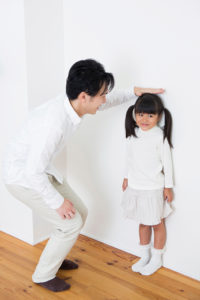
Look How I’ve Grown
Compare your child’s height today with the measurement you made at the beginning of the year. Ask: How did your height change? (The number is larger. You grew!) Choose a stackable object (soda can, blocks, stick-on notes) to measure your child. Start at the floor and move up as you stack the objects. Help your child count the objects (units). Confirm that the last number in the count tells how tall your child is. For example, your child might be eighteen blocks tall. (The last unit might extend a little above or below the actual height.)
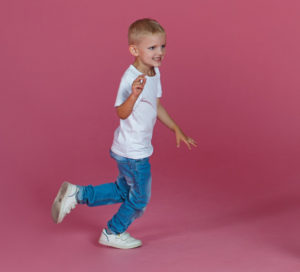
“Say and Rhyme”
Listen to the beginning of the song with your child and identify the rhyming words. Then start the recording again and skip in a circle when you hear the chorus. Stop and touch the appropriate body part for each verse and skip again for the chorus.
Reading with your child
Before and Now
Read the title and the names of the authors and illustrator. (Their photos are on the final page of the book.) Remind your child that the person who writes the words in a book is called the author. The person who draws the pictures (illustrations) is called the illustrator. Read about the women who created this book. Then read the book. Ask: If you wrote a book, what would you write about? What kind of illustrations or photos would you want to have?
Listen and Write
Explain to your child that you will write part of a sentence on the paper. Your child will tell you how to fill in the blanks to complete the sentence.
Before I _______, but now I _________.
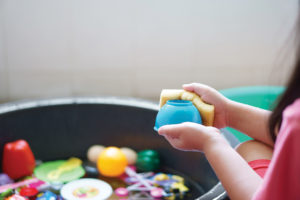
Washing Up
Suggest that your child wash up some of the toys and objects that you have used in your learning area. Provide a container with a mixture of water and dish soap. Help your child choose objects that can be dipped into the tub and those that should just be washed with a damp cloth or sponge. Wash the objects and when they are dry, pack them into a box for future use. Ask: How can we place these items in the box so that they all fit?

“Hello Friend”
Talk with your child about friends. Point out that even though learning at home means that friends do not see each other daily, friendships are important. Name some friends and talk about activities that are fun to do with friends. Listen to the song and have your child pretend to sing it with a friend. This is a great opportunity for a video call to a special friend.
Reflecting on the Year
Show a yearly calendar. Recite the names of the months (January to December) as you flip through the calendar. Have your child help you count the number of days in each month. Point out that the months have a different number of days. Some months have more than 30 days and one month (February) has fewer. Make a chart that shows how many months have and do not have exactly 31 days.
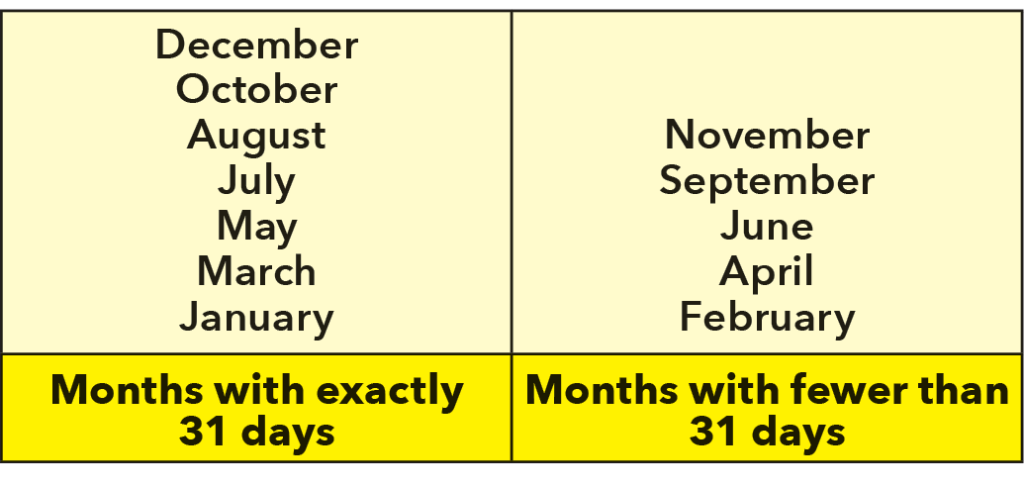
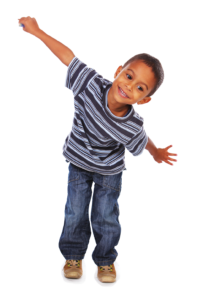
“Hands and Fingers”
Moving your hands and fingers in different ways to the rhythm of the song is a great way to release tension and energize. Stand up, enjoy the moves, and then sit down again on the final line.
Reading with your child
My Ten Best Friends
Enjoy practicing counting as you and your child listen and sing along with this number chant. Say: There are rhyming words on each page, let’s see if we can find them.
Mr. Pencil’s ABC’s
Throughout this year, you and your child have sung the alphabet song and practiced identifying and forming the letters. Point out a few special letters on the cover’s border (the letters in your child’s name, the first letter of your last name). Then sing along to practice saying the alphabet in a new way.
Listen and Write
Explain to your child that you will write part of a sentence on the paper. Your child will tell you how to fill in the blanks to complete the sentence.
Before I _______, but now I _________.
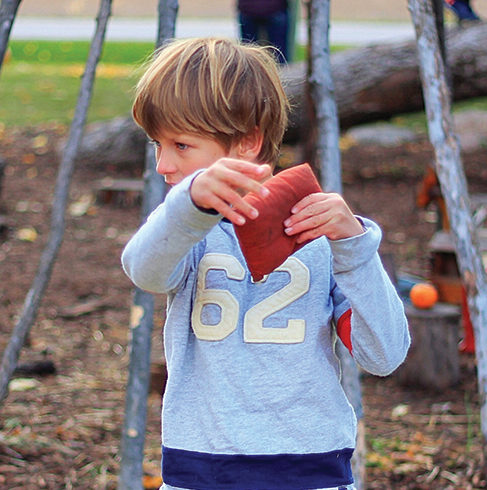
Toss It in the Hole
Ask: How has your throwing improved this year? Are you able to throw beanbags in the box now? Challenge your child to a more complicated tossing game by making a circular hole in the bottom of a box and placing it upside down so that your child tries to throw the beanbag into the hole. Ask: How is this game harder? Note: If you have a corn hole board, suggest your child use it for practice.
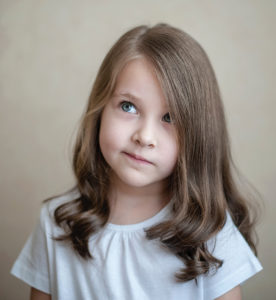
Favorite Calming Strategies
Talk about a few of the calming strategies that you have taught your child this year. Choose one that is your favorite and do it with your child. Then have your child choose a favorite, show you how it is done, and lead you in doing it.
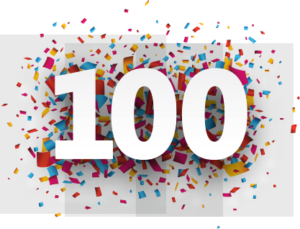
Count to 100
Counting all the way to 100 is quite an accomplishment. Count in different ways so that your child enjoys the practice. Do a different dance movement for each decade (set of ten numbers) as you count together. For example, dig as you count from 0-9. Tip-toe as you count from 10-19. Another time, echo count (1, 1, 2, 2, 3, 3…) or take turns (Say 1, pause so your child can say 2, say 3, pause, etc.). Celebrate reaching 100!
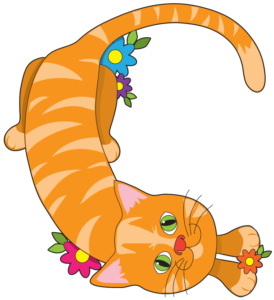
Body Letter Shapes
Have your child name a letter of the alphabet and then try to form the shape of the letter using his or her body. For example, the lowercase letter t could be formed by standing with hands out to the side of the body. Ask: How could you make the letter C or H? Give your child a moment to imagine and solve the problem. The solution may require that you work together. See how many letters the two of you can form.
Reading with your child
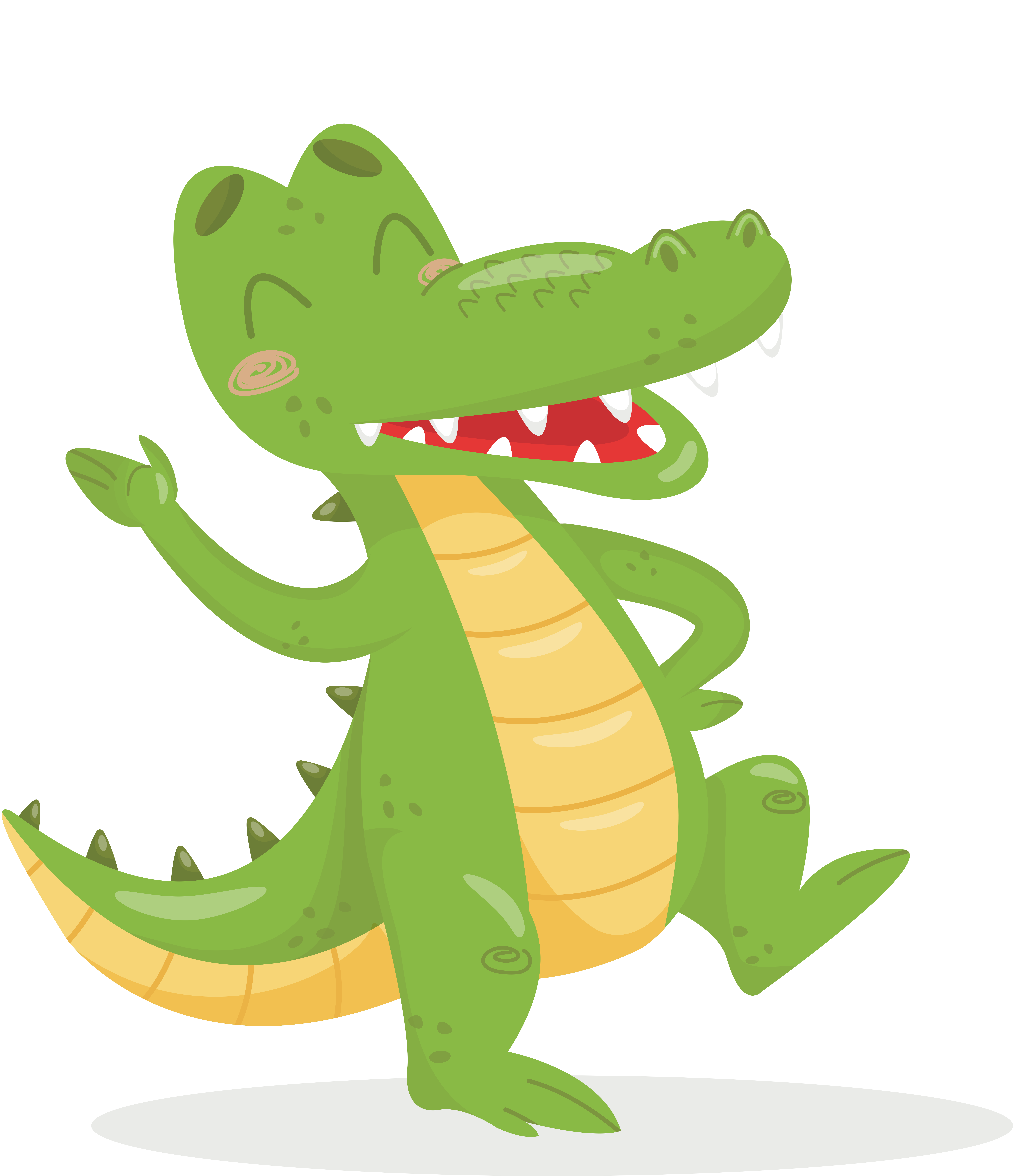
See You Later
Read this poem to your child. Say: This poem is about different ways to say good-bye. Did you hear the rhyming words in each line? Repeat the first line and have your child listen for the words that rhyme (later, alligator). Have your child identify the rhyming words in several different lines. Then read the poem again having your child echo each line.
See you later, alligator.
After ‘while, crocodile.
Bye-bye, butterfly.
Give a hug, ladybug.
Toodle-ee-oo, kangaroo.
See you soon, raccoon.
Time to go, buffalo.
Can’t stay, blue jay.
Mañana, iguana.
The end, my friend.
Listen and Write
Explain to your child that you will write part of a sentence on the paper. Your child will tell you how to fill in the blanks to complete the sentence.
Before I _______, but now I _________.
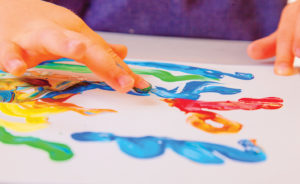
Puff Paint
With your child, mix up a batch of puff paint. Combine ½ cup white glue and 2 cups of shaving cream. Separate the mixture into small cups and add a bit of different colored paint to each cup. Once the puff paint is thoroughly mixed, have your child drop and smear the paint on a piece of cardboard, plastic, or wood to create a 3-D masterpiece. Ask: How do you like painting with puff paint? Note: If you prefer an easier clean-up, simply squirt some shaving cream on a plastic tray or placemat and have your child spread the cream and then draw in it with a finger.

“I Wish You Well”
Take time today to send good wishes to people outside of your home. Ask: Who would you like to wish well today? (essential workers, delivery people) Write the names that your child suggests on stick-on notes, post them in a place where you will see them as you move through your day, and sing the song to these people.
Math I Learned This Year
Have your child think about the different things that the two of you have done during math times this year. Suggest that your child draw a picture to show a favorite math activity. This is a great time to assess (evaluate) your child’s progress. Have your child count to the highest number he or she can; count out a set of objects (for example, say: Show me seven rocks.); find and name different shapes around the house; identify, describe and extend a pattern.
How Long Is a Minute?
Reinforce how long a minute is by having your child race against a minute timer. Your child will do the moving and you will do the counting.
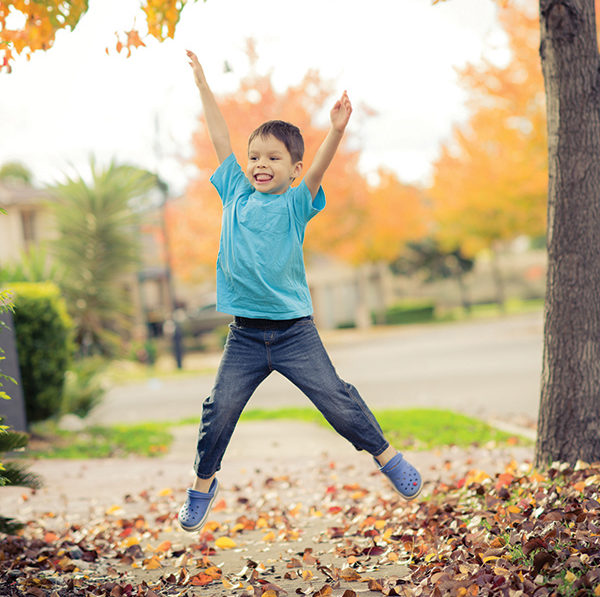
- How many times can you hop?
- How many jumping jacks can you do?
- How many laps can you make around the yard?
- How many times can you stand up and sit down?
Ask: When you were racing the timer, did a minute seem like a long time?
Reading with your child
Before and Now
Ask: How have you changed this year? Encourage your child to talk about personal changes (I got glasses, I wore a cast, I lost a tooth). Read the book to see how the children in this story changed during their pre-k year. After talking about a few of the changes in the story, ask: What did you learn at our home school this year? What do you think you will learn next year in school?
Listen and Write
Explain to your child that you will write part of a sentence on the paper. Your child will tell you how to fill in the blanks to complete the sentence.
Before I _______, but now I _________.
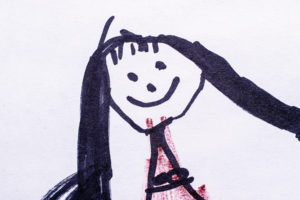
Self-Portrait
Provide art supplies and have your child draw a self-portrait. Talk with your child about the difference between the way he or she drew at the beginning of the year and today’s drawing. Acknowledge the hard work that your child has done this year. Snap a photo of the drawing so you will have a record of it. Frame the actual drawing or post it on your refrigerator gallery.

